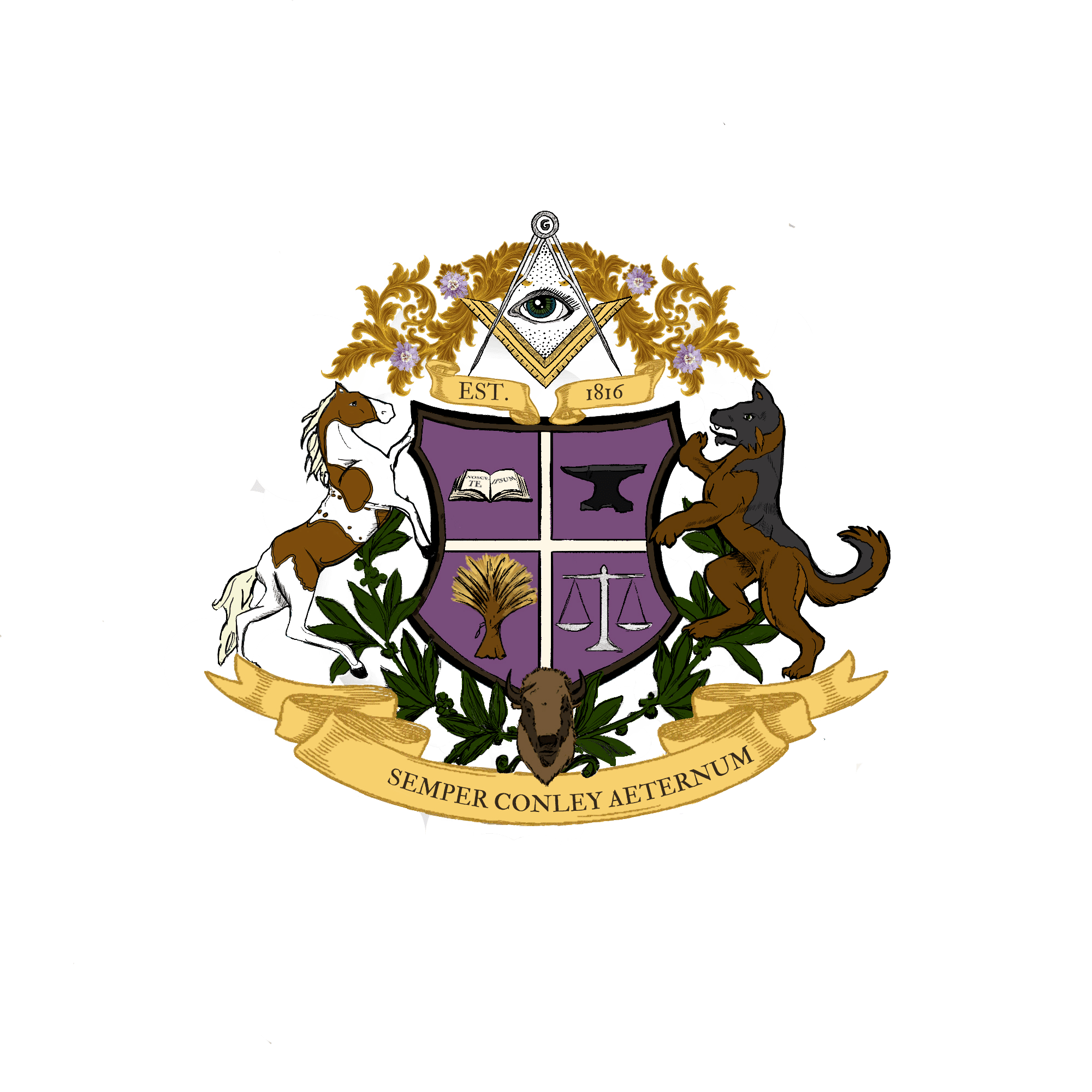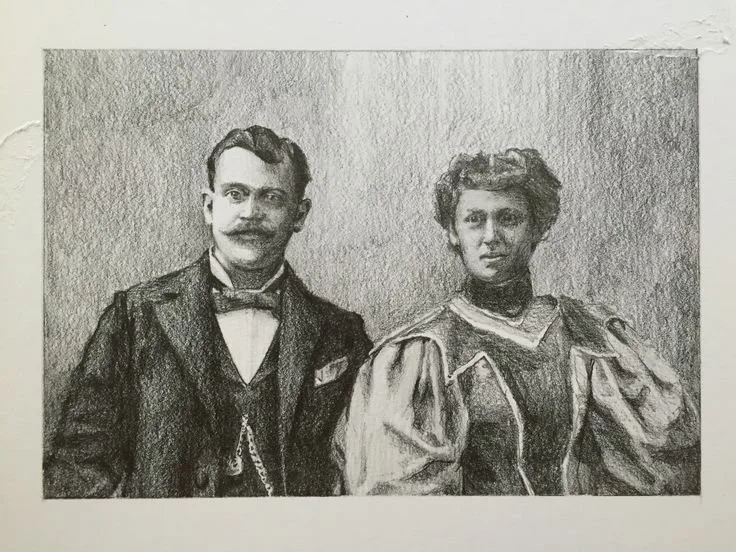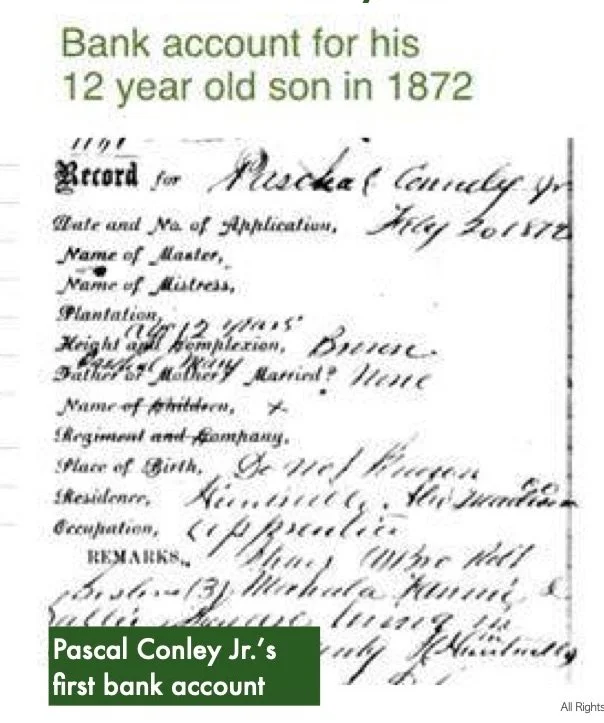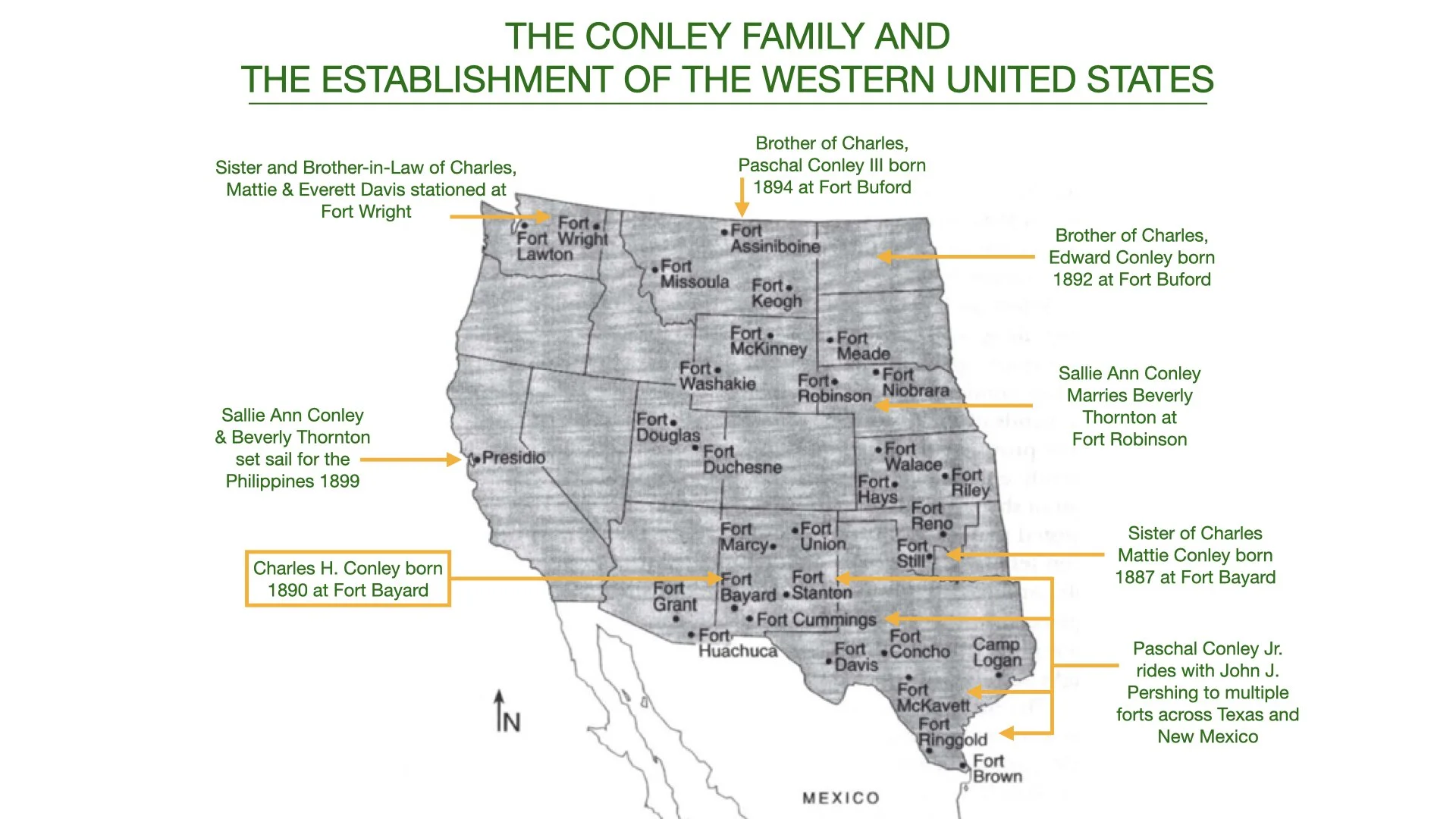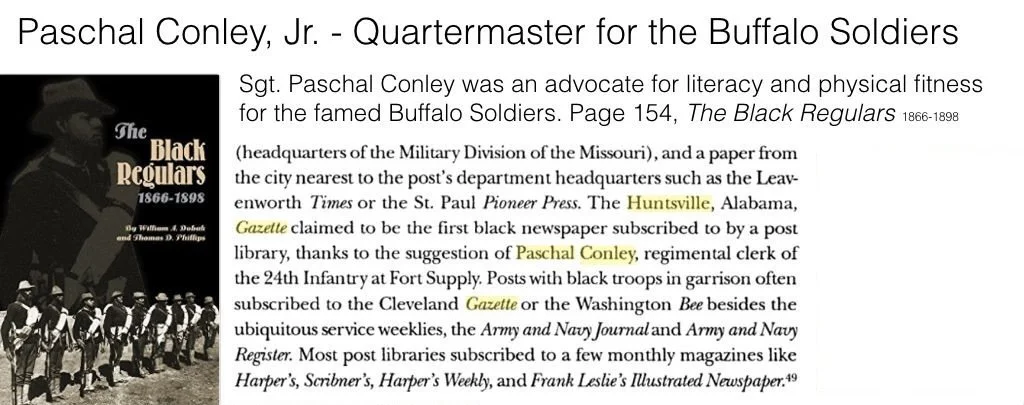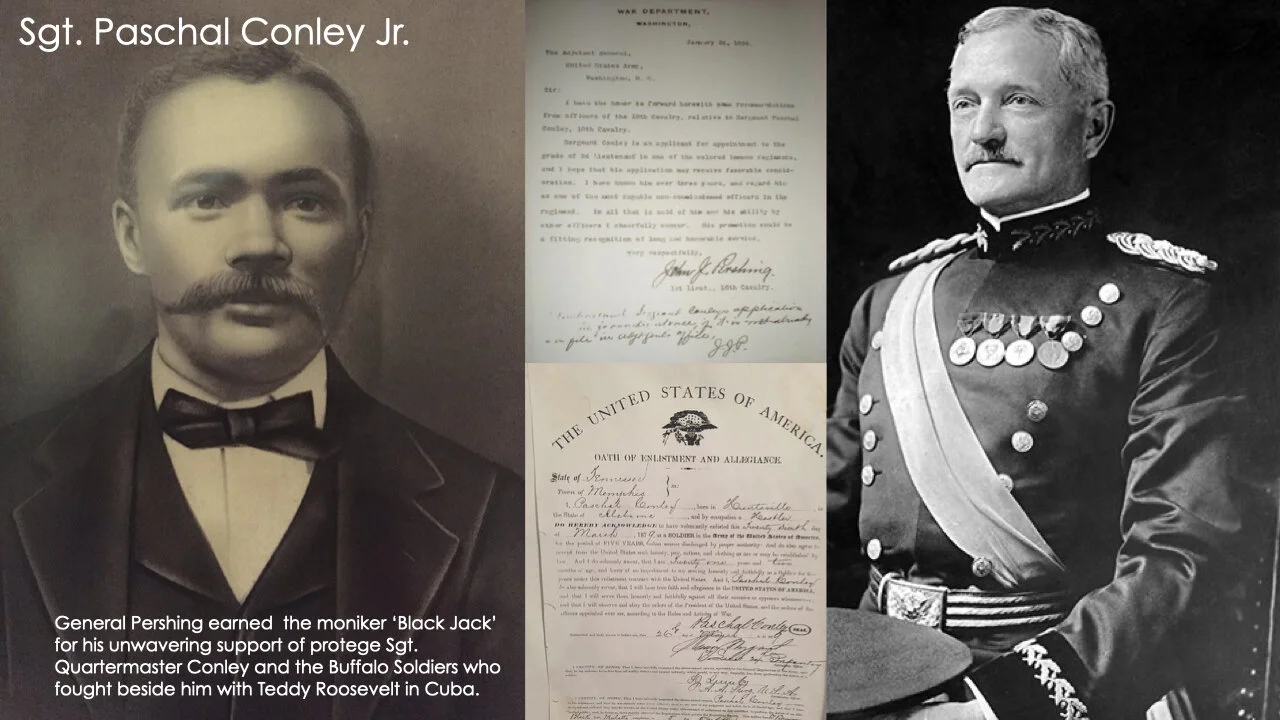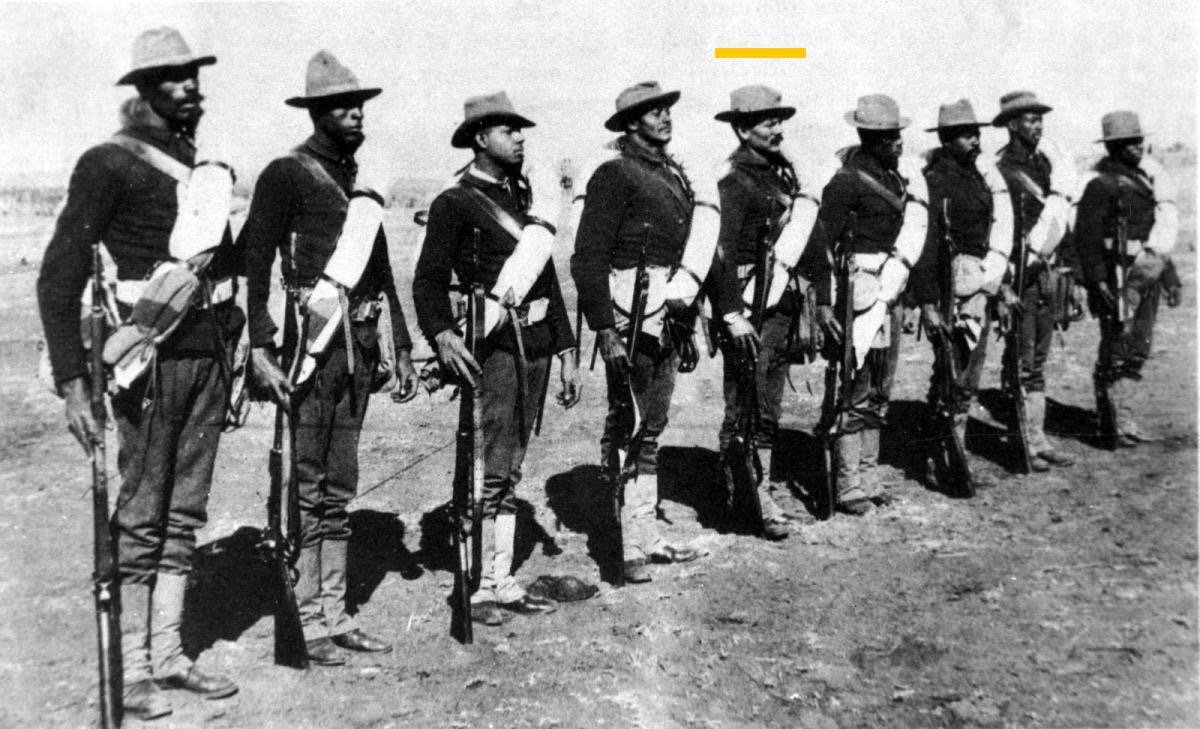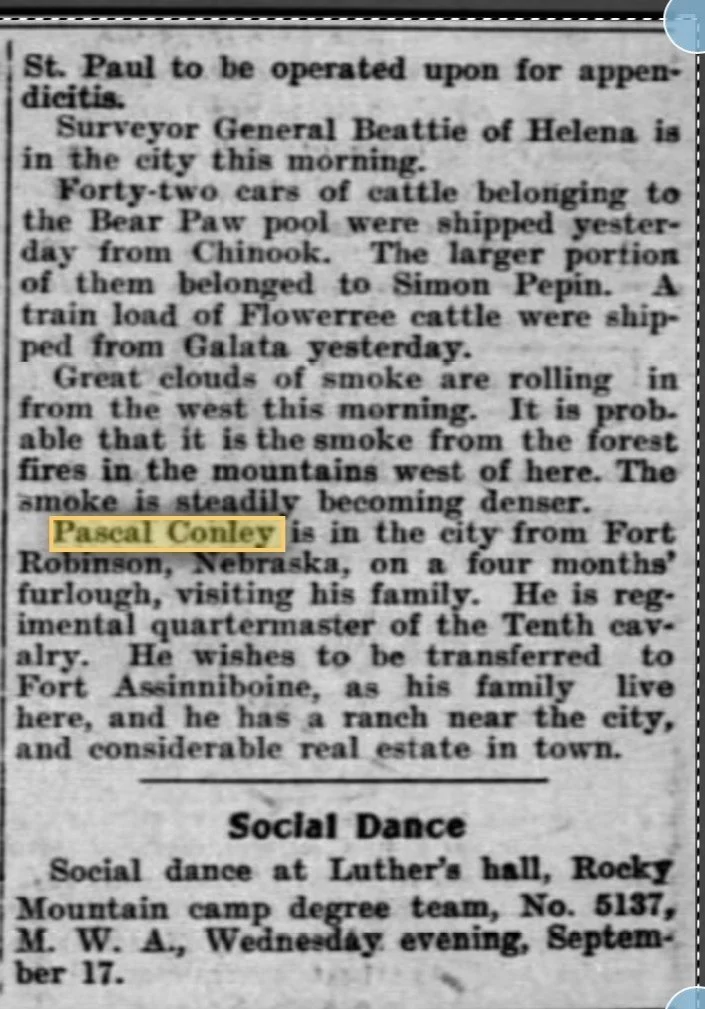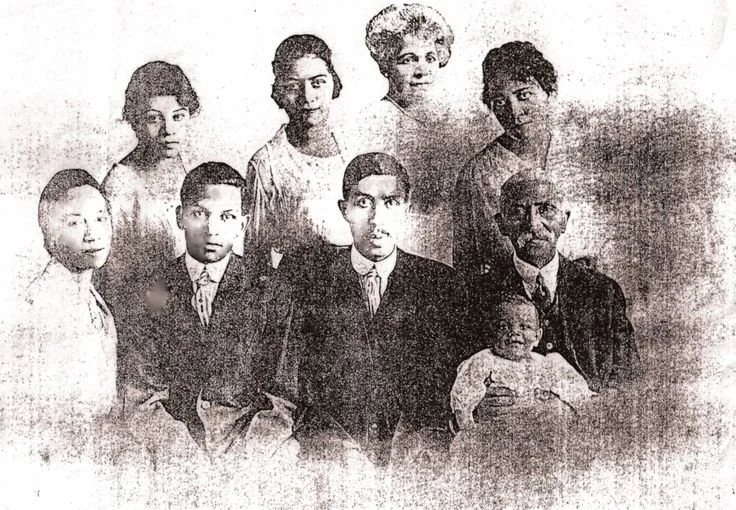PASCHAL CONLEY JR.
CORNERSTONE OF THE CONLEY MILITARY LEGACY
Upon retirement from military service, Paschal Conley Jr. became a significant landowner in Montana. He enjoyed a high profile in Montana, Idaho, and Washington state due to his sterling reputation.
SECOND LIEUTENANT
PASCHAL CONLEY JR.
Enlistment: 1878
Branch: Army
Division: 24th & 10th Infantry, Horse Calvary
Highest Rank: 2nd Lieutenant
Theater: Spanish-American War, Cuba. Deployments across the American West in the expansion of the United States.
ORIGINS OF PASCHAL CONLEY JR.
EARLY LIFE 1858-1868
Paschal Conley was born in Alabama in 1858 to Paschal Conley Sr. and Mary Steiger Conley.
Paschal Jr. was the son of livery owner Paschal Conley Sr., grandson of James Conley stable master of the Green Bottom Inn and Equestrian Center, and Green Bottom owner John Oldham Connally. His father was a prominent local figure in the Antebellum era. Through his father, Paschal Jr. was also nephew of carriage maker James Conley, wheelwright John Conley, landowner Green Conley, and prosperous blacksmith William ‘Bill’ Conley. He was the cousin to Matthew Conley of the U.S.C.T. of 1863-1867.
Paschal Jr.’s father, also named Paschal, owned a livery stable, and also stable construction business with his brothers.
Paschal Conley Jr,’s family was not an old Planter Class family. He was not from the highest social class of the American South. They were Colored. However, in the his father was a quadroon from a family of high standing in the mixed race community of Huntsville.
As the son of James Conley, and grandson of John Oldham Connally, Paschal’s father did receive training as a butler and stable manager at the Green Bottom resort. This spared Paschal Sr. the gritty, hardscrabble existence of growing up on a remote farm, or life in hard labor. With this background, Paschal Jr. was supported and privileged compared to most children in the Civil War era of the 1860s.
Paschal Conley Jr.’s first bank account at 12 years old, unusual for any child in 1872,
YOUNG ADULTHOOD : 1868 - 1878
When Paschal junior began his teen years, he attended the Lincoln School, of which his father was a patron. Paschal Sr. provided William H. Councill with financial support to start the school, which was dedicated to teaching Colored youth. Lincoln School taught students of all ages, and provided a good enough foundation for Paschal Conley Jr. and his siblings. That Lincoln School evolved into Huntsville Normal School, which began providing higher education in 1875 as the predecessor to Alabama A&M, when Alabama officials used the Morrill Act of 1862 to establish it as one of the first seventeen colleges under the new updated Morrill Act. Paschal Jr. soon ached for adventure, and his high school and college studies gave way to his interest in military life. Young Paschal Jr. left school to enlist in the U.S. Army.
MILITARY LIFE AND ADVENTURE : 1878-1898
At 20-years-old, Paschal Conley Jr. joined the Army in 1878, as a private in the 24th infantry Company ‘H’ of the Buffalo Soldiers.
He worked mainly as a regimental clerk at Fort Supply in what is today Oklahoma. When his term of service had expired in 1884, Paschal went home to Huntsville, Alabama and married Mary Jones on April 20th. After their marriage, Paschal re-enlisted, and with every station, Mary followed him.
We can see this correlation in comparing his station details and the births of his children. Mattie was born in 1887 in ‘Indian Territory’, now current-day Oklahoma. Charles Hamilton was born at Fort Bayard, now modern-day New Mexico in 1891. Edward was born in North Dakota Territory in 1892, also known as ‘The Badlands’. Paschal III. was born in Montana 1894.
In the aftermath of the Great Sioux War of 1876-77, the U.S. Military established military forts throughout the Northern Plains to protect U.S. interests and dissuade attacks from tribal nations, including Fort Assiniboine, established near the Milk River in north-central Montana. The U.S. government stationed the famed Buffalo Soldiers in various forts across the West, including Fort Assiniboine. 10th Cavalry troops occupied the fort from 1891 until the beginning of the Spanish-American War in 1898. Paschal Conley was among the 10th Cavalry.
“His Company ‘H’ was stationed at the fort long enough for his family to establish themselves in the Havre area. They remained there while Paschal fought in the Spanish-American War, and while he was stationed in Cuba from 1899 until 1902. According to his military records, whenever there was a furlough, Paschal was located in Havre with his family” according to Montana State Historic Preservation Office.
A MENTOR IN JOHN J. PERSHING: 1895-1904
Paschal Conley’s career was transformed through his relationship with John J. Pershing. In 1895, Pershing took command of the 10th Cavalry Regiment, one of the original Buffalo Soldier regiments composed of African-American soldiers. It was here where his deep relationship with Conley took root. Starting in 1895, Pershing would remain a lifelong friend and mentor to both Paschal Conley Jr. and his son Charles Hamilton Conley.
From Fort Assinniboine in north central Montana, Pershing commanded an expedition to the south and southwest that rounded up and deported a large number of Cree Indians to Canada. This campaign brought Conley to northern Montana, where he placed his family. Pershing was reassigned to teaching duties at West Point, but history would intervene.
Paschal Conley Jr. , fifth from left, gold bar marker above head, in New Mexico or Oklahoma. Location unverified. Early in his career, he was stationed in the Southwest.
CUBA AND THE SPANISH-AMERICAN WAR
At the start of the Spanish–American War in 1898, First Lieutenant Pershing was the Regimental Quartermaster for the 10th Cavalry. His duties as quartermaster had him unloading supplies at the Daiquiri Port in Cuba on June 24, then managing the supply chain to the battlefront. It was at that moment that Pershing would begin training Paschal Conley as his replacement quartermaster for battleground logistics. Pershing set his sights on higher command, which he would famously achieve.
Shortly thereafter, Pershing also served with the 10th Cavalry during the siege and surrender of Santiago de Cuba. Pershing was commissioned as a major of United States Volunteers on August 26, 1898, and assigned as an ordnance officer. Conley took his place as Regimental Quartermaster, remaining under Pershing’s command.
Teddy Roosevelt with Paschal Conley Jr. in Cuba. The Rough Riders on his left and right, Buffalo Soldiers on the far right of this photo. The Regulars (volunteer infantry on the far left). This photo was rarely shown in its entirety for 100 years, and has been often cropped to exclude the Regulars and Buffalo Soldiers.
Sgt. Quartermaster Paschal Conley in Cuba with the Buffalo Soldiers.
Paschal Conley managed horse transport for Spanish-American War, the last major military campaign in U.S. history to use war horses. Photo courtesy of U.S. Army Heritage Education Center.
FAMILY LIFE OF PASCHAL CONLEY
Upon his retirement in 1906, Paschal Conley Jr. settled in to home life. He and his wife Mary Jones Conley, kept a full social calendar in Havre and Great Falls, Montana, as well as Minneapolis-St. Paul, Minnesota. They also visited Huntsville, Alabama from time to time, to stay in touch with his hometown. He maintained a strong connection to his father’s brother William, who had become quite prosperous and named his own son Paschal as well. A social announcement, detailing Lt. Conley’s visit to his uncle William ‘Bill’ Conley, is shown below.
After situating his family in Havre, the Paschal Conley Jr. family became an integral part of the community. Paschal’s wife Mary Jones Conley became a prominent woman, popular with townspeople and military wives alike. Paschal’s children, Mattie, Charles, Edward and Paschal III, all performed well in schools, winning the favor of the town. Havre newspapers even chronicled the children as a model youth.
A LEGACY IN LITERATURE AND PERSONAL FITNESS
As a military figure, Paschal Conley Jr. was exceptional. However, he was historically significant not for valor on the battlefields or high seas, but rather, his administrative abilities, discipline, and attitude toward learning. His contributions helped enhance the public image of the Buffalo Soldiers greatly.
His processes and zeal for order learned as protégé of General John J. Pershing had a transformative effect on the Buffalo Soldiers. After his training as adjutant for Pershing, Conley’s Buffalo Soldiers horse-mounted calvary evolved from a militia into a flexible, disciplined utility force capable of everything from construction of garrisons to management of ammunition supply chains to combat action.
His efforts to encourage literacy were exceptional. He urged soldiers to read widely - from newspapers to poetry. Conley created mini-libraries filled with edifying reading at forts on the Western Territories in the 1800s. He introduced basic exercise and calisthenics, organized sports and recreation. All of these efforts reshaped the Buffalo Soldiers into an admired institution from 1880 until his retirement in November of 1906.
In retirement, Conley became a significant figure in Montana, and his wife a doyenne of the Black Elite in Montana, Idaho, and Washington State in decade from 1904-1914.
His daughter Mattie was well-sought after for marriage, and it was arranged for her to wed a young Buffalo Solider trained by Paschal’s own protégé, Everett Davis. They were stationed in Spokane, Washington. Their descendants would reach the highest level of achievement in the equestrian sports.
